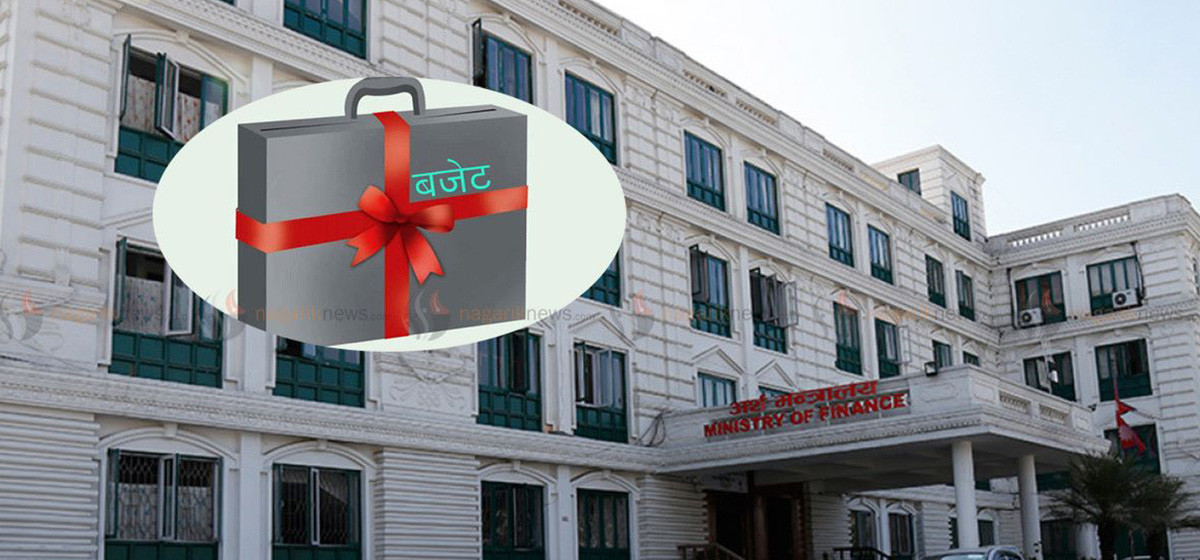KATHMANDU, July 11: The Finance Ministry’s trend of drafting ambitious budgets but failing to spend them has repeated this year as well. Due to the government's weak spending capacity, Rs 350 billion of the allocated budget for the current Fiscal Year (FY) remained unspent.
For the current FY 2024/2025, the government had announced a budget of Rs 1.8603 trillion. However, only Rs 1.051963 trillion was spent. The Office of the Comptroller General closed the payment accounts at midnight on July 9. As a result, only 80.91 percent of the allocated budget was utilized in the current FY.
In the previous fiscal year, only 77.44 percent of the budget was spent. Although there has been slight improvement in spending this year, the persistent practice of announcing an oversized budget and later downsizing it through the mid-term review continued in the current FY year as well.
The government has not only shown weak budget spending capacity but also failed to meet its revenue collection target for the current FY. Out of the targeted Rs 1.4193 trillion in revenue, only Rs 1.0972 trillion was collected—just 77.34 percent of the target.
With less than a month left in fiscal year, 62% development bud...

Of the budget allocated for recurrent expenditure, 85.82 percent has been spent. Out of the Rs 1.14 trillion allocated, Rs 978 billion was utilized. However, the situation of capital expenditure remains dismal. Of the Rs 352 billion allocated for capital spending, only Rs 208 billion has been spent—just 59.13 percent of the allocation.
As the government failed to collect the targeted revenue and utilize the allocated funds, it reduced the total budget by Rs 168 billion through a mid-term review. The original budget of Rs 1.8603 trillion was revised down to Rs 1.6927335 trillion. However, even the revised target could not be met, with actual spending falling short by Rs 187 billion. According to the revised figures, Rs 1.0293 trillion was allocated for recurrent expenditure, Rs 299.5 billion for capital expenditure, and Rs 363.63 billion for financial management.
Failure to spend the allocated budget has affected development and construction works. The Finance Ministry, however, has claimed there has been improvement compared to the previous year. Contractors have long blamed the government for delays in development spending. President of the Federation of Contractors' Associations of Nepal, Rabi Singh, said low spending was due to delayed government payments.
The Finance Ministry acknowledged that falling short of the revenue target and the lack of expected growth in capital expenditure remain key challenges. It stated that to boost spending, the multi-year contract process has been made more structured and implementable.
Economic indicators show positive trend
Despite weak budget spending capacity, economic indicators remain positive, according to the Finance Ministry. Although revenue collection fell short of the target, it increased by Rs 108 billion compared to the previous year. Capital expenditure also rose by Rs 36 billion year-on-year. The overall size of the economy has grown by around Rs 400 billion.
The size of the economy has grown from Rs 5.7 trillion last year to Rs 6.1 trillion in the current FY, according to data shared by the Finance Ministry on Thursday. The country's economic growth rate for the third quarter of the current FY is estimated at 4.8 percent, up from 2.2 percent during the same period last year. Positive growth is expected in 18 industrial sectors this quarter.
Other economic indicators have shown notable improvement. In the first 11 months of the current fiscal year 2024/25 (from mid-August to mid-June), the country received Rs 1.53293 trillion in remittances—the highest ever recorded. Compared to the same period last year, remittance inflow has increased by 15.5 percent.
With the rise in remittance inflow, the current account is in surplus and foreign exchange reserves have also increased. Inflation has declined. In the month of May-June alone, Nepal received Rs 176.32 billion in remittances, up from Rs 128.91 billion during the same period last FY. Foreign exchange reserves rose by 25.9 percent, reaching Rs 2.56938 trillion. The current account shows a surplus of Rs 307.31 billion. As of May-June, the year-on-year point-to-point consumer inflation stands at 2.72 percent, down from 4.17 percent in the same period last year.



































